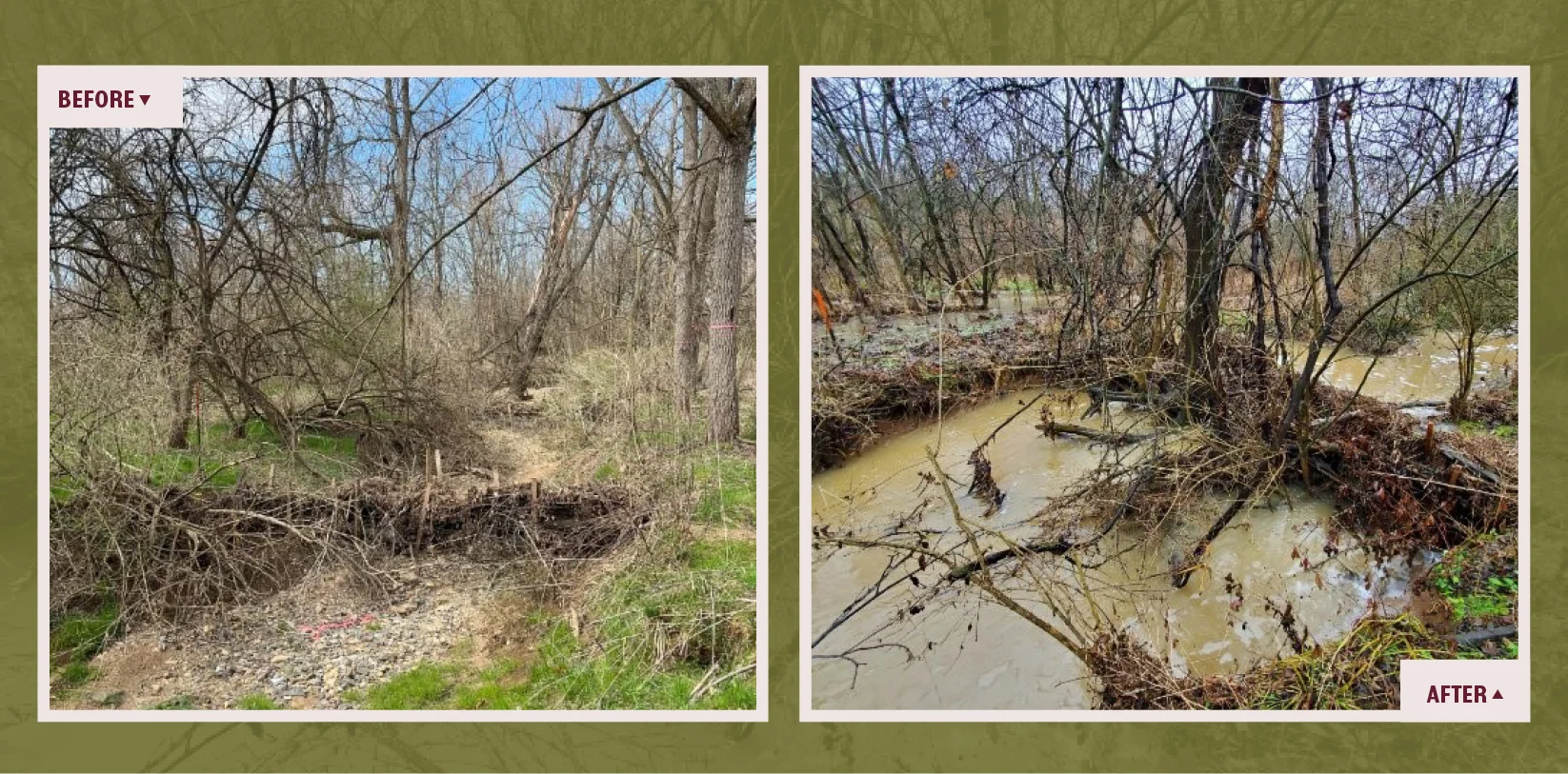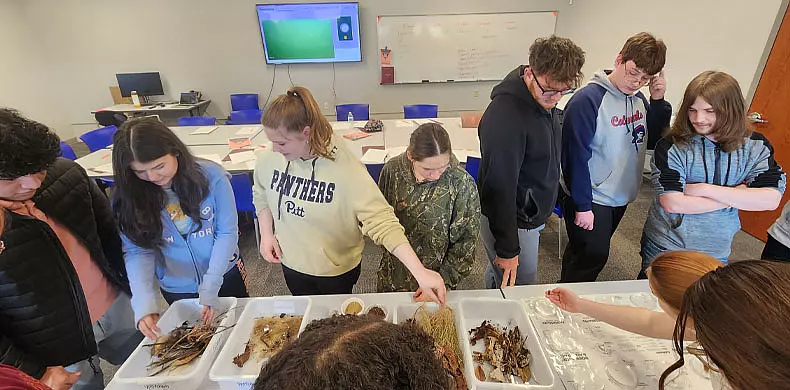Susquehanna University has been awarded a nearly $200,000 grant from the National Science Foundation to evaluate the efficacy of beaver dam analogs in improving the health of urban streams overwhelmed by stormwater.
“We hope to determine how beaver dam analogs can stabilize flood-prone urban streams and improve their capacity to withstand the impacts of extreme weather events such as storms, droughts and floods,” said Siobhan Fathel, assistant professor of earth & environmental sciences at Susquehanna University.
Susquehanna installed its first BDA in a stream at its CEER field station in 2023 to slow water flow and trap sediment to prevent erosion and the flow of sediment downstream to the Susquehanna River and ultimately the Chesapeake Bay. A stabilized streambank should also improve groundwater infiltration and lead the once perennial stream to flow year-round again. At the time, it was the first restoration project of its kind to be permitted by the state Department of Environmental Protection.
Funding from the NSF will support Susquehanna’s efforts to gather data monitoring changes in water flow, retention and quality that will be used to assess the effectiveness of BDAs. Susquehanna will also evaluate the cost-effectiveness and ecological benefits of the dams in comparison to traditional stormwater management solutions like concrete channels and culverts, which are typically more expensive and offer limited benefits for ecological health and stormwater management.
The NSF-funded project will broaden its reach beyond academic research by partnering with local organizations to promote sustainable stormwater management practices, advancing the field through both practical implementations and education.
“If the dams do demonstrate significant economic and environmental advantages,” Fathel said, “our hope is that they will become approved restoration structures across the state, opening the door for other practitioners to employ the methods piloted at Susquehanna.”




